The Tampa Museum of Art was founded in 1920, but it didn’t have a purpose-built space until 90 years later, when its 66,000-square-foot building opened on a prominent downtown site. This facility, designed by the San Francisco–based architect Stanley Saitowitz, opened in 2010. A cube enveloped in a perforated aluminum rainscreen sits atop a raised plinth surrounded by generous gardens, a public park, and the Hillsborough River.
But problems quickly surfaced with the new building, mostly because it didn’t exactly engage with its context: Its ground-level glass facade was back-painted a minty green as a way to fulfill an overly ambitious request for storage and administrative spaces, despite the fact that the museum “had a very modest collection and mostly showed visiting exhibitions,” Saitowitz told AN. What could have been an elegant entry was filled by archival spaces, dimly lit offices, and art tucked away behind closed doors. After only a decade of operation, the museum was already in need of a renovation.
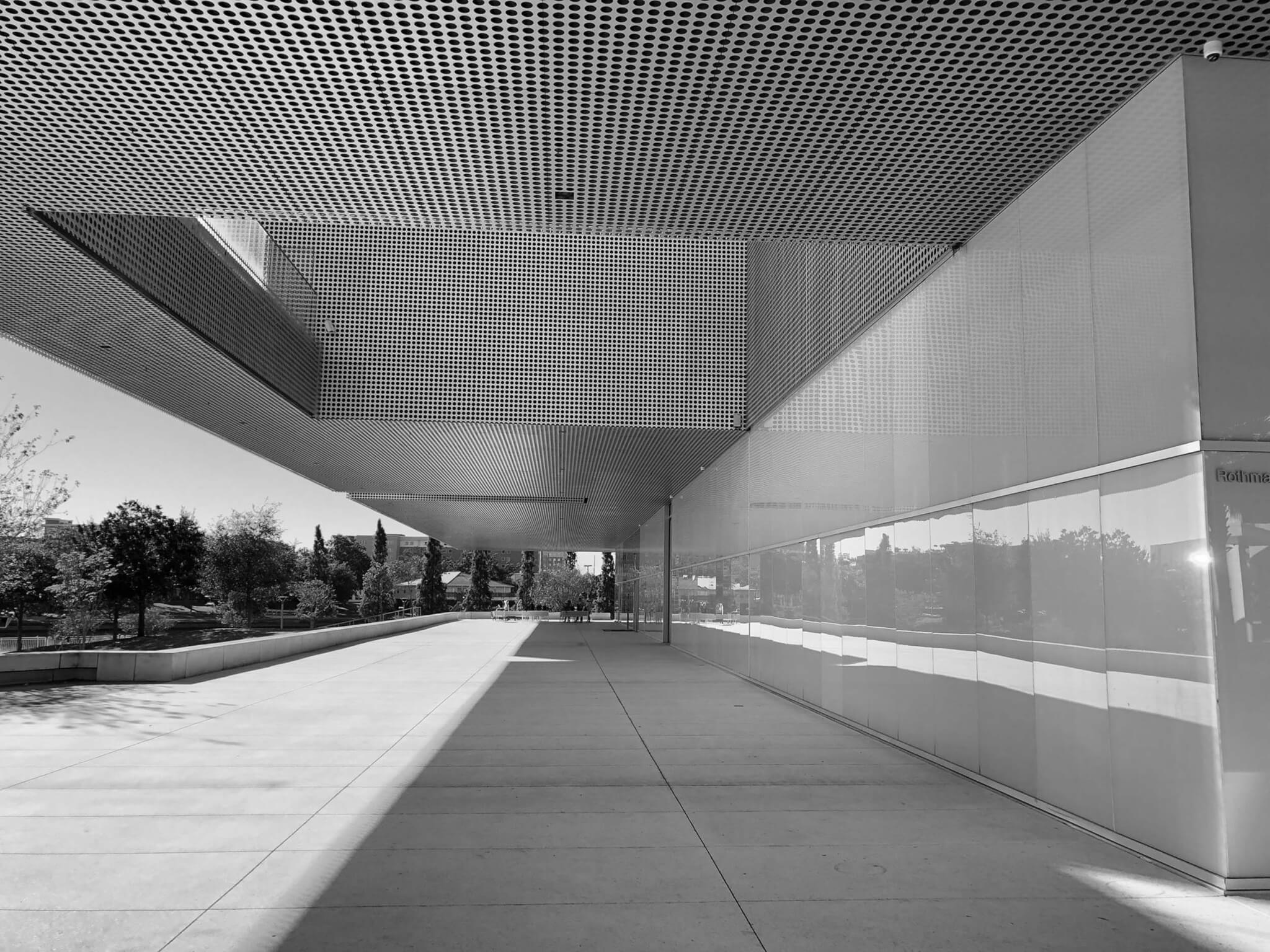
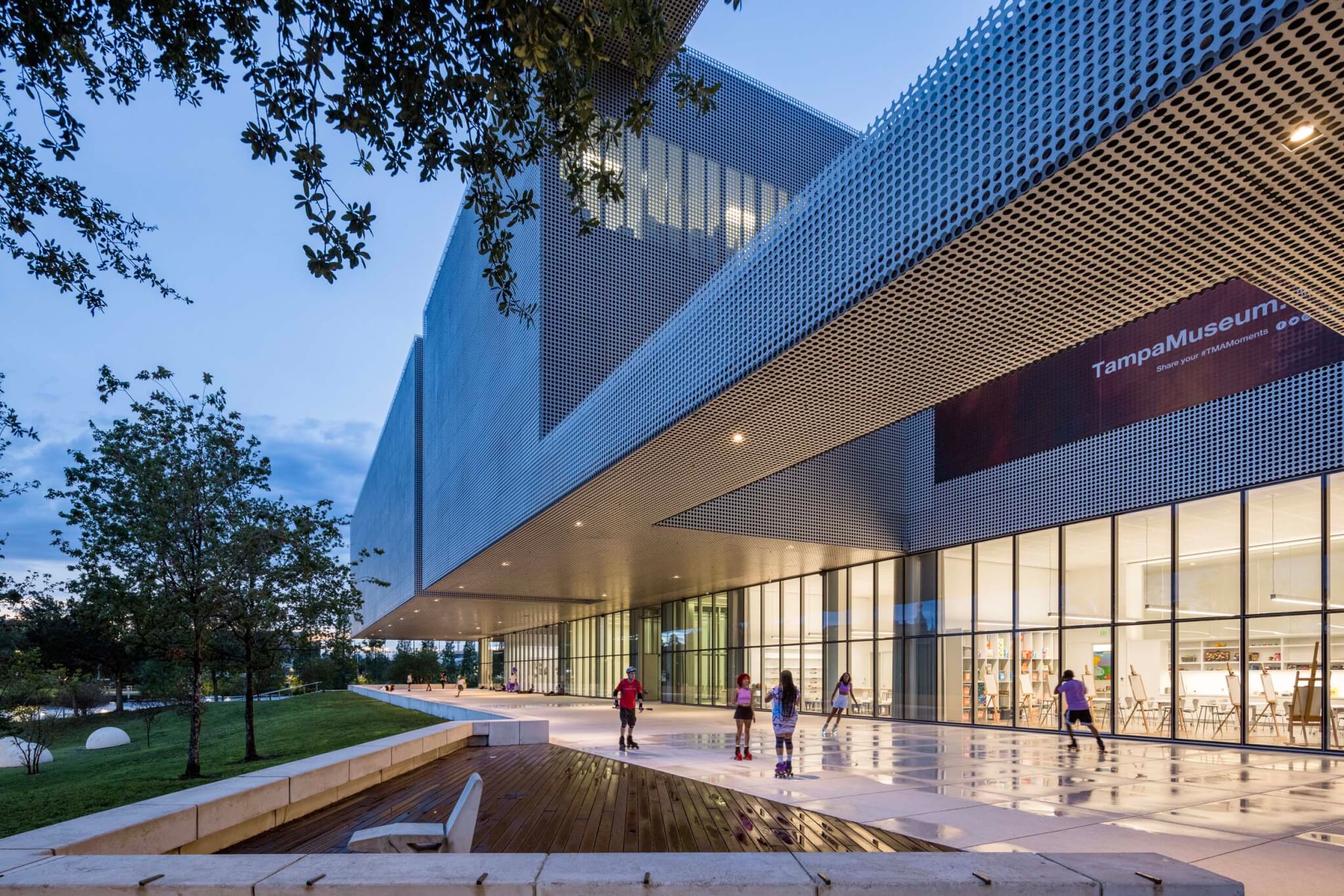
Weiss/Manfredi began working with the museum in 2018. The office’s portfolio of signature cultural commissions includes the nearby Artis—Naples complex in Naples, Florida, home of the Baker Museum and the Naples Philharmonic. In January 2021, the museum unveiled plans for a Centennial Renovation project to increase exhibition space, enhance existing educational facilities, and allow for more hands-on experiences. While Weiss and Manfredi were given the opportunity to significantly alter Saitowitz’s design, after environmental studies and site visits, they decided to chart a preservation-minded approach to keep the 2010 form intact. Their careful revival of the museum evidences their enormous respect for the original design. “It’s a really beautiful building,” Weiss said during a recent office visit. “We admire Stanley’s work and the kind of restraint in the abstraction of the language.”
This position required a more programming-forward approach to the design scope. “Both in practice and during school, architects are programmed to always add stuff in order to make our mark,” Manfredi admitted. “Here, we decided to make our mark by subtraction, and the result is tangible when looking at the metrics.” The numbers speak for themselves: Just by reallocating storage spaces and technology, activating previously liminal spaces like stairwells and corridors, and freeing up the ground-floor plaza spaces, Weiss/Manfredi increased the size of the education spaces from just 1,400 square feet to over 12,000. And the firm more than tripled the size of the galleries, starting with only 14,800 square feet and adding seven new rooms to grow the exhibition areas to 43,000 square feet—all without changing the envelope. This happened through, in Manfredi’s words, “activated design thinking and careful surgery.”
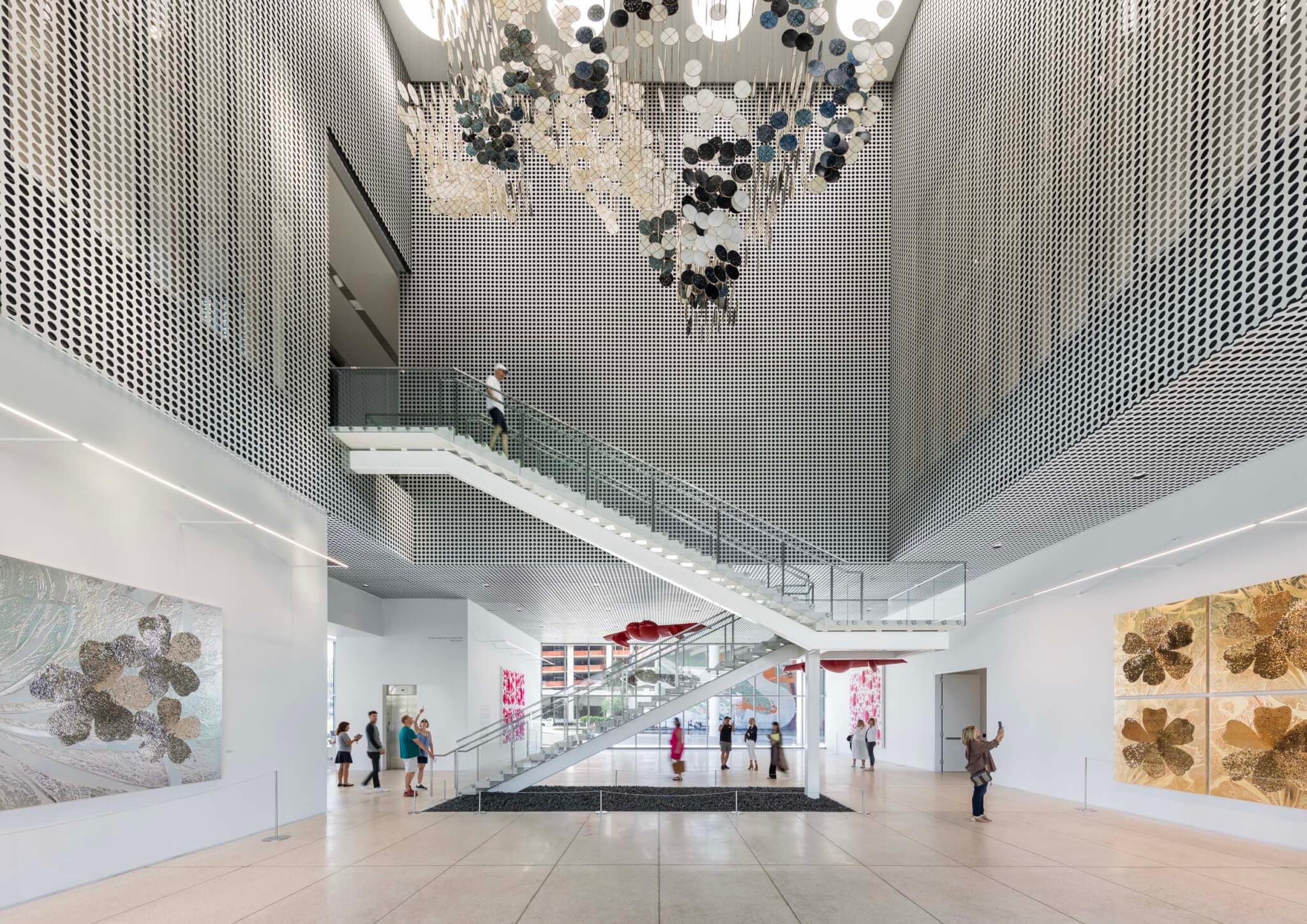
As educators themselves, Weiss and Manfredi were quick to get behind the goals of the museum’s director, Michael Tomor, who prioritizes educational programming. “Today’s museums are not just about exhibitions; they’re focused on being a part of their communities through genuine engagement. In Tampa, this connection to the mission is pretty remarkable,” Manfredi said. As nationwide funding cuts to arts education continues to be a hot-button topic, many families see institutions like the Tampa Museum of Art as an outlet for learning and community activation. This prioritization is now visible, literally: The back-painting has disappeared, and the entire glazed first floor is dedicated to education.
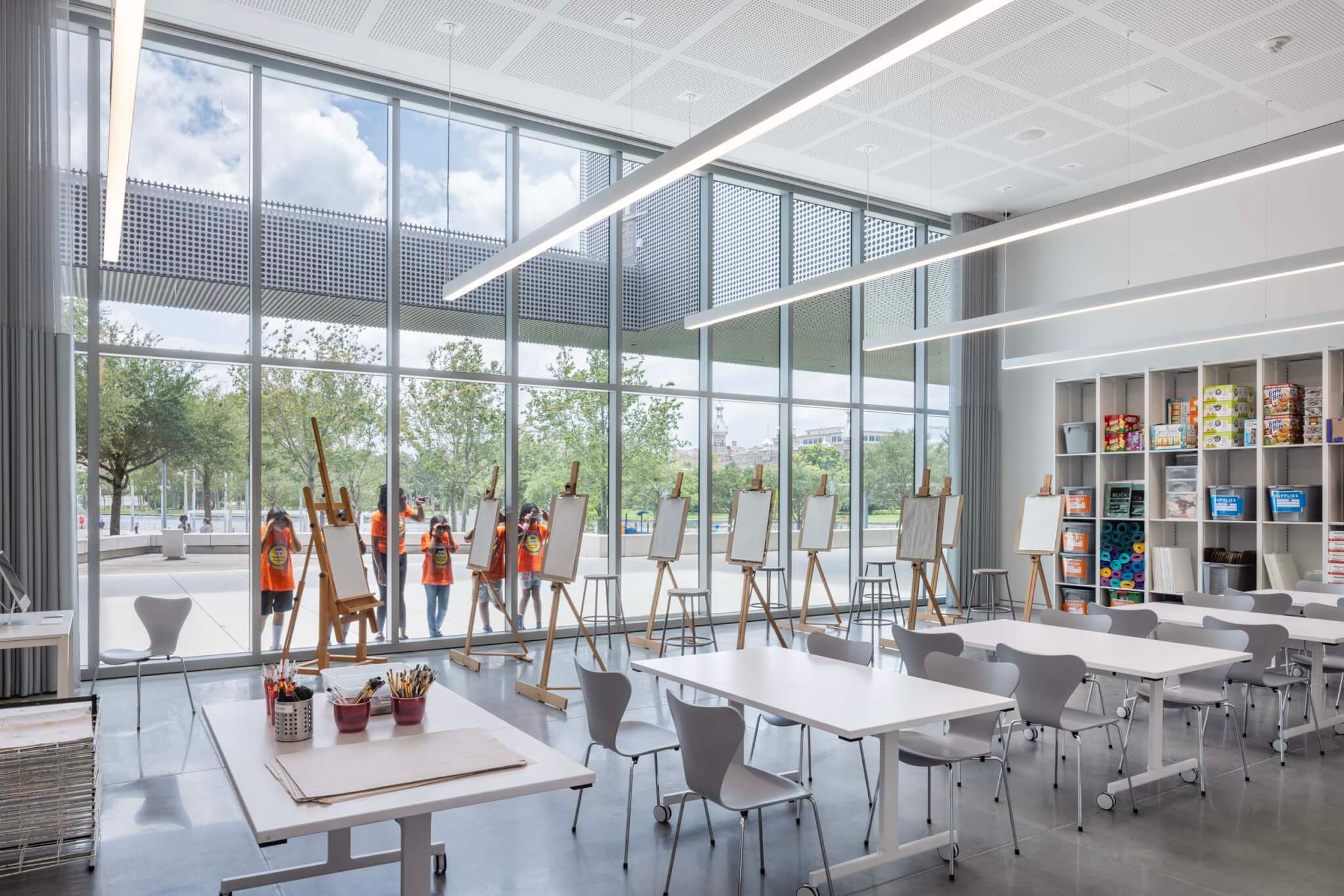
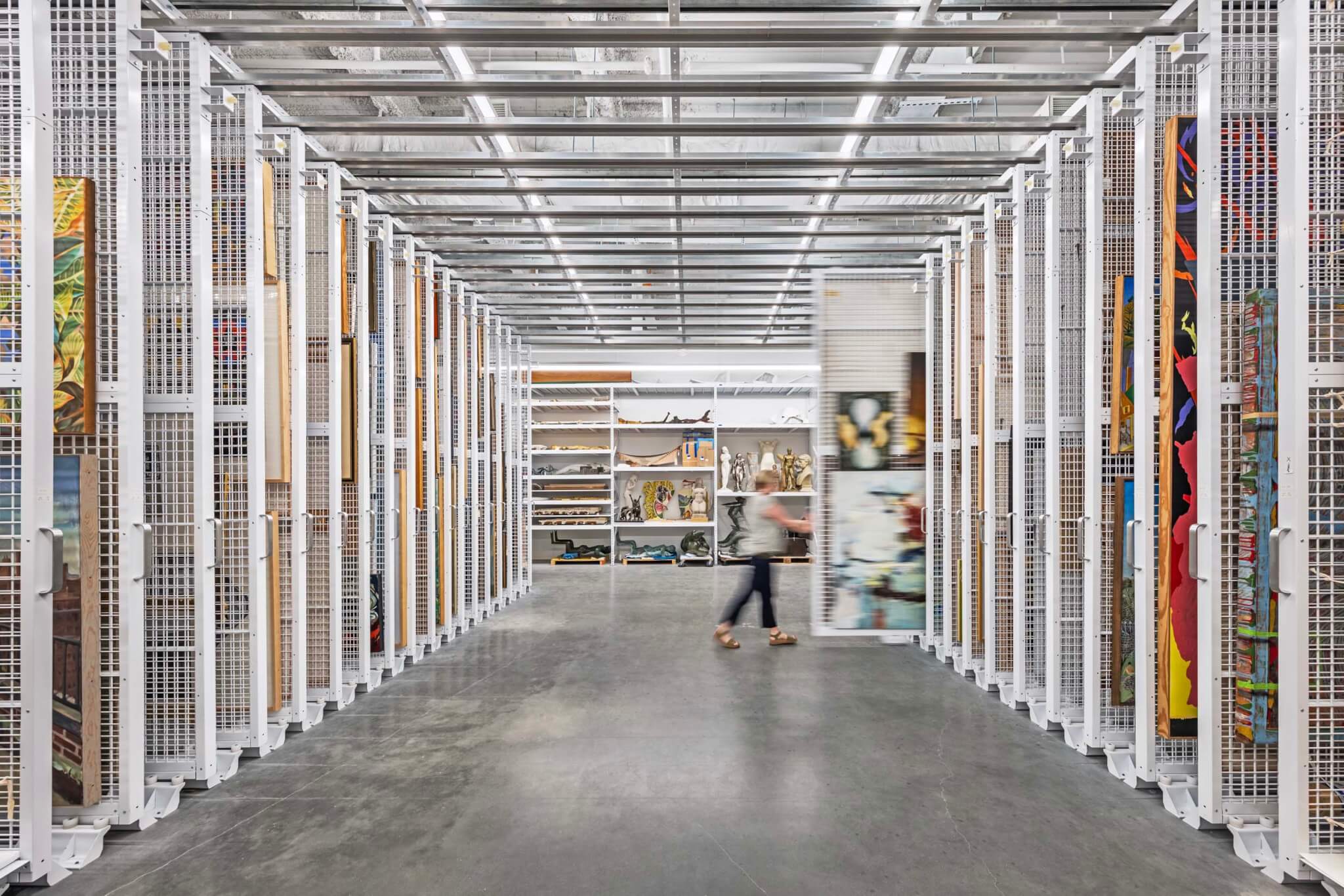
This works for a variety of reasons, but principally because the museum can’t display art on this level due to flood risk. Weiss/Manfredi also addressed that insurance challenge by creating double-height loft spaces where monumental works can be suspended.
In addition to the ground-floor transparency, Weiss/Manfredi addressed other critical areas like entrances and newly allocated storage spaces. Where art used to be stored haphazardly in crates, the firm specified professional art-handling solutions, conservation labs, and office fit-outs. The design team also carefully addressed the parking lot entrance, where most visitors first encounter the building. New plantings and accessible slopes welcome visitors even from the back of the site. The improvements will be even more useful with the completion of a second phase of work.
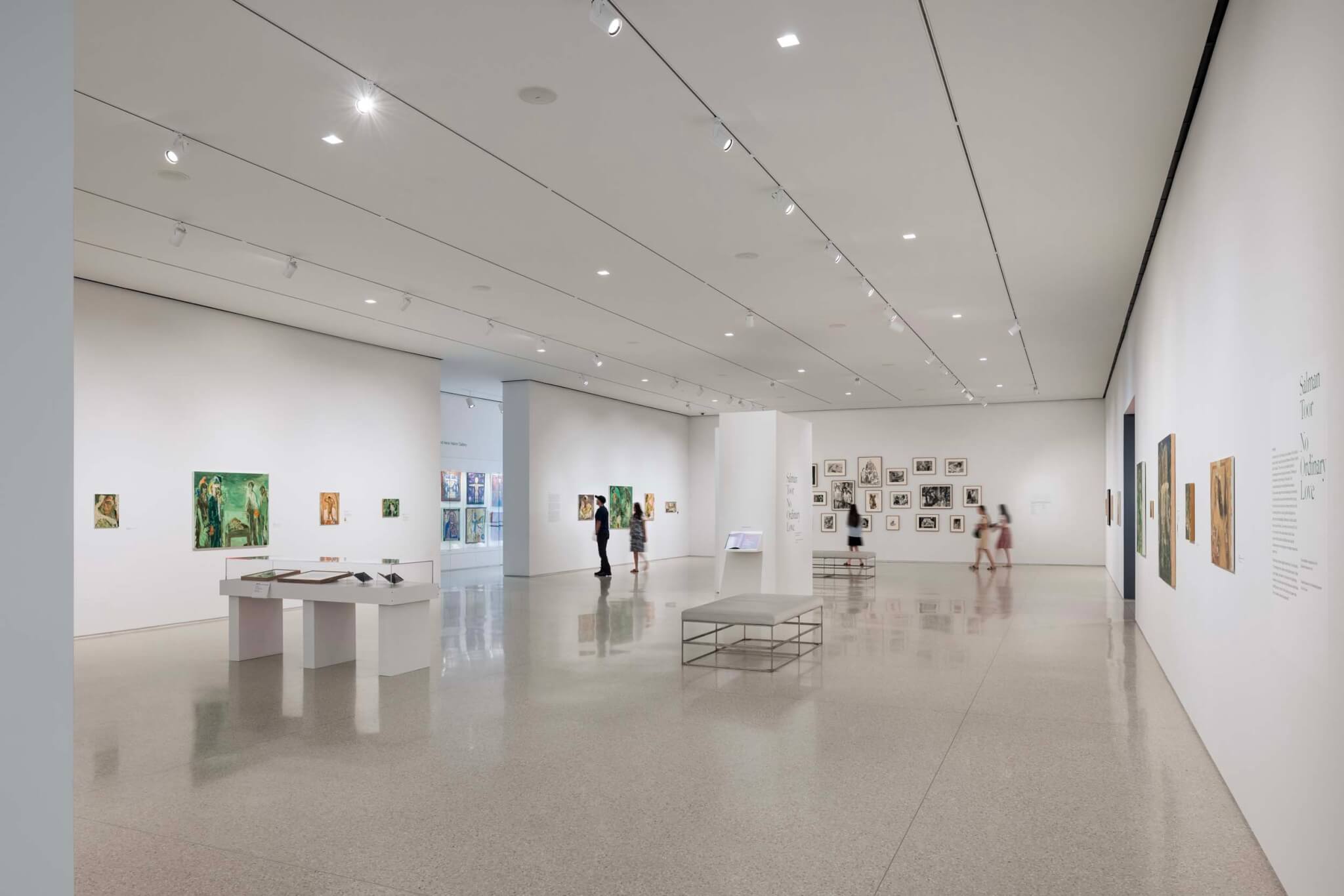
Weiss/Manfredi has designed an additional freestanding, 51,000-square-foot wing to complement Saitowitz’s building, which will allow the museum to better engage performance artists and multimedia installations. Its cantilever also shades public bike paths and green spaces on the river’s edge.
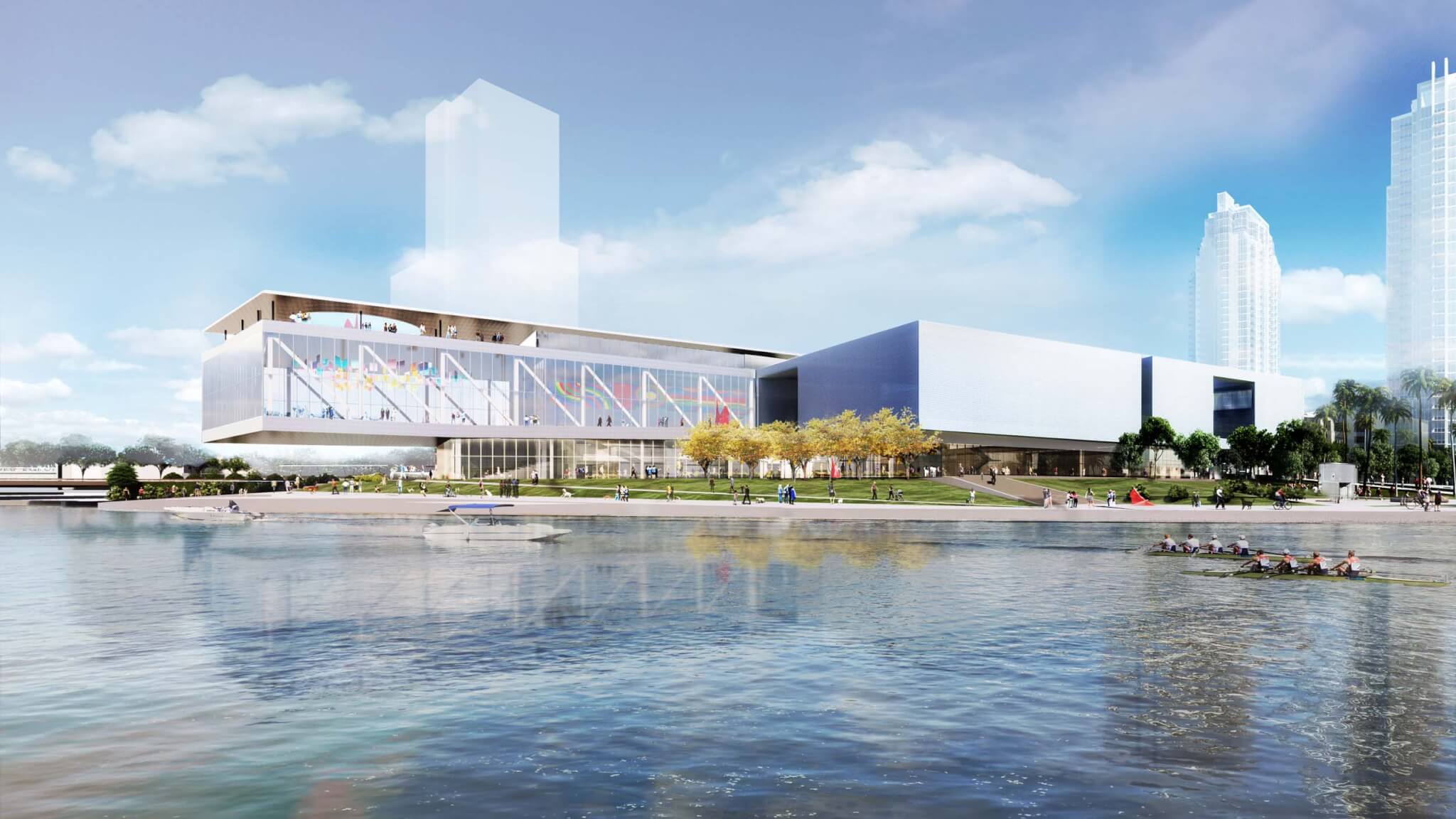
Gesturing to a model of the new building set on a table in their New York office, Weiss and Manfredi each use their hands to trace new approaches to both buildings, simulate cyclists rounding the riverbend, and slice the air to suggest the knife-edge of the new cantilever: “This diagonal cut over the park was required by zoning setbacks, but even so, I think it’s pretty cool,” Manfredi said. The structure is anticipated to open in fall 2026.
Architects always work with and against constraints, but here in Tampa, Weiss/Manfredi has put intelligent and generous design thinking to work.

